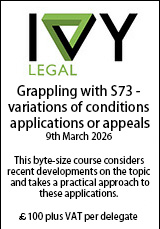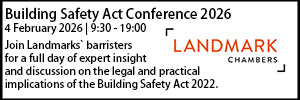Council warns developers and landowners over felling trees for development and misunderstandings about biodiversity net gain
- Details
Tandridge District Council has fired a warning to developers and landowners of the “significant financial and legal consequences” of cutting down trees on sites being considered for development.
The local authority has also warned of a common misunderstanding about the operation of biodiversity net gain (BNG) in relation to lost habitats.
Tandridge said there have been a number of recent incidents across the district where large trees have been felled in order to clear a site for a planning application.
“The council is reminding everyone that if biodiversity is removed from a site, there is now a legal requirement for it to be compensated for in any related application,” it said.
This requirement came into force in February 2024 under the BNG provisions of the Environment Act 2021.
The council said: “If mature and high value trees are removed from a site, the costs of meeting the biodiversity replacement and the net gain obligations are very substantial.
“Such action could also be an offence under the Forestry Act 1967 as well as resulting in deliberate habitat destruction, which may be an offence under the Wildlife and Countryside Act 1981. Trees may also be protected by Tree Preservation Orders or because the site is within a Conservation Area. The council will consider all options available to prevent this happening in the future as well as taking enforcement and legal action where it is able.”
Cllr Catherine Sayer, Leader of Tandridge Distric Council, said: “We have had incidents where 300-year-old oak trees have been cut down because they are in the way of development. In one instance, the developer withdrew the planning application when they realised the cost of replacing the lost biodiversity would be tens of thousands of pounds.
“A common misunderstanding with BNG is the assumption that lost habitats can simply be replaced like-for-like, for example, removing a mature tree and planting a few younger trees in its place. However, the Biodiversity Metric explicitly addresses this misconception. It measures not just habitat quantity but also quality and ecological value. Replacing a high value tree or habitat costs a lot of money.
“We want to raise awareness that this environmental vandalism has serious financial and legal consequences and hope it acts as a deterrent.”
Must read
Sponsored articles
Unlocking legal talent
Walker Morris supports Tower Hamlets Council in first known Remediation Contribution Order application issued by local authority
Lawyer (Planning and Regulatory)
Legal Director - Government and Public Sector
Contracts Lawyer
Locums
Poll




































